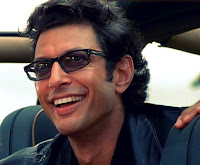Still, it’s a bit reassuring to learn that even a legend
like Franklin had his foibles, at least when viewed through the lens of history
from our present vantage point. In his
discussion of Native Americans, he was uncommonly sympathetic, particularly in
cases where European settlers at the frontiers maliciously murdered innocent
Natives without provocation. He clearly
viewed them as equals to the Europeans from a human rights standpoint. However, he also possessed much of his
contemporaries’ cultural and religious chauvinism, which he used to
justify the expansion of Europeans deeper into America, as is evidenced in
passages like the following:
I often wish’d that I were employ’d by the Crown to settle a colony in Ohio, that we could do it effectually and without putting the nation to much expense. What a glorious thing it would have been to settle in that fine country a large strong body of religious and industrious people! What a security to the other colonies, and advantage to Britain by increasing her people, territory, strength and commerce. Might it not have greatly facilitated the introduction of pure religion among the heathen, if we could, by such a colony, show them a better sample of Christians than they commonly saw in our Indian traders, the most vicious and abandoned wretches of our nation? In such an enterprise I could have spent the remainder of my life with pleasure.
In other writings, he often referred to Native Americans as “the
savages.” My knowledge of 18th
century English is limited, so I’m not sure how derogatory “savage” was at the
time. Furthermore, elsewhere Franklin
advocated the honest purchase of their territory rather than forcible seizure
by war. However, it’s clear that he had no
compunction about encroaching on Native lands for the sake of promulgating his
own people’s culture and religion, which he clearly implied to be superior. It's hard to fault him too gravely for this, considering the cultural milieu in which he was raised; even the sight of giants has its horizons.
On the topic of religion, he was more tolerant than many of
his time. For instance, he referred to his
rationalist friend Joseph Priestly as an “honest heretic,” opining that “…’tis
his honesty that has brought upon him the character of heretic” and “…I think
all heretics I have known have been virtuous men.” He continually advocated the importance of
virtue and maintenance of good, honest character. On the other hand, he was not above using religious
language in pursuit of his carnal fulfillment.
Here is one excerpt from one of his many letters to an object of his affection
and lust, Madame Brillon, a married woman who was young enough to be his daughter:
And now as I am consulting you upon a case of conscience, I will mention the opinion of a certain father of the church, which I find myself willing to adopt, tho’ I am not sure it is orthodox. It is this, that the most effectual way to get rid of a certain temptation is, as often as it returns, to comply with and satisfy it. Pray instruct me how far I may venture to practice upon this principle?
This series of exchanges happened after his own wife’s
death, and there’s no clear evidence from this autobiography that he had any
sexual affairs during his marriage.
However, considering the fact that Franklin spent most of the last 20
years of his marriage overseas, as well as his rumored reputation as a
philanderer, it’s conceivable. Some have accused Franklin of neglecting his wife by traveling so much, though Skousen suggests in the epilogue that Benjamin and Deborah had both drifted apart from one another in their later years (she repeatedly refused his many offers to take her to England with him in the years prior to the revolution). In any case, it would be interesting to hear what Mrs. Franklin had to say about their relationship.
I imagine Franklin’s political enemies and other
acquaintances had other negative things to say about him, but his writings
convince me that he possessed an advanced moral compass for his time and on the
whole earnestly strived to do the right thing, while cognizant of his own
limitations to determine the best course of action. Sounds like a decent guy to me.





